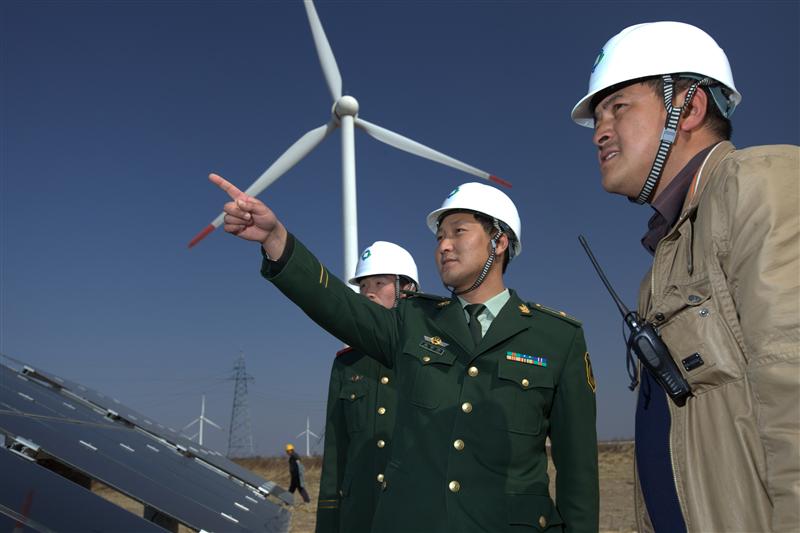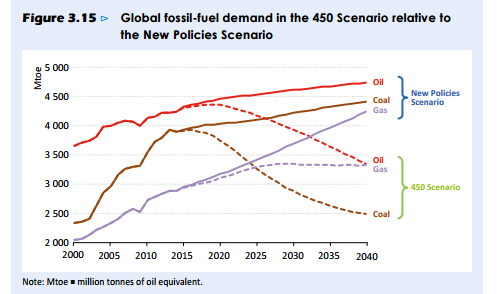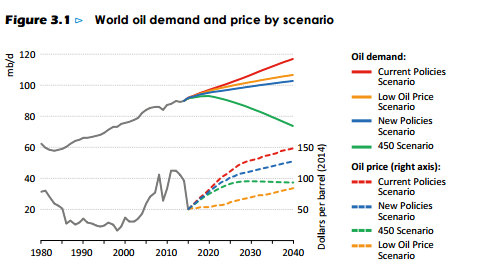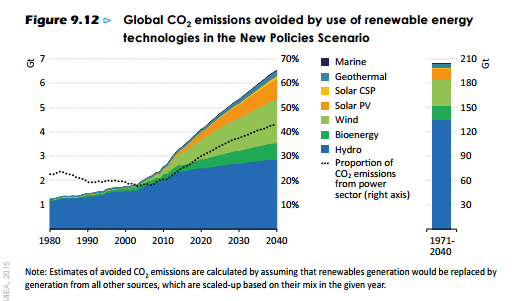Renewables to become world’s largest source of power within 20 years – report

Renewables – such as wind and solar power – will replace coal to become the biggest single source of power across the planet by the 2030s, according to a new report by the International Energy Agency (IEA).
The report is being released on the eve of a global summit in Paris to discuss efforts to slow global warming and as the UK government moves decisively to end support for most forms of onshore renewable energy.
The Paris summit has triggered a slew of new pledges from the world’s major polluters (called INDCs) which – the IEA says – will lead to a boom in global renewables, cutting coal use and emissions.
The IEA says existing pledges amount to a 50% rise in subsidies for renewables as support for fossil fuel use and extraction is cut and the costs of oil extraction rise.
However it finds that this is still insufficient to avoid the more catastrophic impacts of climate change by limiting warming to two degrees.
The Paris-based think-tank suggests this would need an increase in renewable investment to $400bn worldwide, arguing this would prove cost effective in the long run.
The report in charts
1) Renewables costs fall – as the cost of extracting oil rises
Many of the report’s key assumptions are based on promises by the world’s largest emitters to cut emissions – the ‘Intended Nationally Determined Contributions’ (INDCs) submitted by world leaders ahead of talks on the climate later this year – so it’s policy not just economics driving the changes.
However the report also finds that when it comes to cost “the balance is shifting in favour of renewables.”
“Oil and gas production costs increase,” the report notes as “operators are forced to move to smaller, more remote or more challenging reservoirs.”
“By contrast, cost reductions are the norm for more efficient equipment and appliances, as well as for wind power and solar PV, where technology gains are proceeding apace and there are plentiful suitable sites for their deployment.”

The report goes on to note that subsidies for fossil fuel extraction and use far exceed those for renewables (though this is partially driven by the fact we use far more fossil fuels).
“Fossil-fuel consumption continues to benefit from large subsidies: we estimate this global subsidy bill at around $490 billion in 2014… Subsidies to aid the deployment of renewable energy technologies in the power sector were $112 billion in 2014 (plus $23 billion for biofuels).”
On a side note the global think-tank warns that if the oil price stays low we could find ourselves reliant on just a few countries which can produce it cheaply – basically the Middle East.
2) So renewables will be the world’s largest source of electricity by the 2030s (even if the world fails to stop run-away climate change).
So it’s not too surprising that the IEA finds that when you put the troubled fossil fuel economics and policies to tackle climate change together you get a boom in renewables.
“Deployment grows worldwide, with a strong concentration in the power sector where renewables overtake coal as the largest source of electricity generation by the early-2030s. Renewables-based generation reaches 50% in the EU by 2040, around 30% in China and Japan, and above 25% in the United States and India.”

And that chart above is assuming the world doesn’t really do enough to tackle global warming. If, as the IEA hopes, the current pledges are just a start and global action on climate change accelerates to a level that keeps global warming to two degrees then things change faster – with 39% of the world’s power coming from renewables by 2040.
That’s double the power generation from gas (which renewables overtake in just 15 years) and more than all other fossil fuels put together.
3) A lot of that comes from China, where coal use has flattened
“The report also underlines that the single largest energy demand growth story of recent decades is near its end: China’s coal use reaches a plateau at close to today’s levels, as its economy rebalances and overall energy demand growth slows, before declining.”
Sure, China’s historic coal use numbers have been pretty shaky (as Unearthed reported some time ago), but it does seem that the world’s biggest economy is going through a transition and the IEA thinks renewables will be a big part of that.
Here is another not very well presented chart.

4) Which means we use less fossil fuels and the price may fall even further
If governments only do what they have so far promised then oil and coal demand, which have been increasing dramatically for years, merely stays roughly the same and gas demand continues to increase.
But if this year marks the start of a series of steps to cut emissions to generally avoid the more catastrophic impacts of global warming then, the IEA suggests, oil and coal demand will collapse, whilst even demand for gas – trumpeted by the likes of Shell as the clean future of energy – flatlines (indeed in Europe it falls).

All of which isn’t great if you happen to be an oil or coal company because low demand means low prices.

5) And lots of renewables does in fact mean less CO2 emissions
This seems obvious, but really, to some people, it isn’t. So here is a handy chart.


